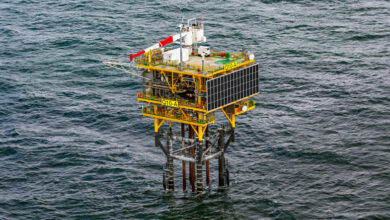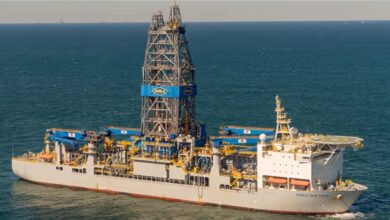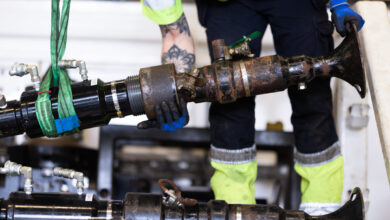Marathon Oil: 3,000-plus wells possible in Eagle Ford acreage
By Joanne Liou, associate editor

Marathon Oil has determined that it may drill more than 3,000 wells in its Eagle Ford acreage, up from an earlier estimate of approximately 1,200. In fact, the company expects production from its US resource assets, which also include the Bakken and the Woodford, to increase by 150% from Q3 2011 to Q4 2013, Bryan Roy, vice president – drilling & completions for Marathon Oil, said. “When you talk about shale and moving the needle for a company that is producing between 400,000 and 450,000 bbls/day, that is substantial,” Mr Roy said during a presentation at the 2013 IADC Drilling Onshore Conference on 16 May in Houston.
For Marathon, the impact that US resource plays are having on the company’s portfolio is significant. As an example, its US business once provided capital for large expenditures overseas, but that pendulum has swung in the opposite direction due to the growth in US unconventionals. “Now, a lot of Equatorial Guinea and Norway production is funding a lot of capital in the US,” Mr Roy said. “We are targeting 5% to 7% average growth rate (in production) across the world.”
Marathon currently has 16 rigs working in the Eagle Ford and expects to spend nearly $2 billion in that play this year, according to Mr Roy. “One of the challenges we continue to have is we tend to overspend our capital because we keep drilling wells so fast,” he stated. “That will continue to be a problem, I hope, because it’s a mark of efficiency.” The company also continues to study its approach to developing its Eagle Ford acreage, such as optimal well density, lateral lengths and completion techniques. “A lot of pilots in the ground now are already completed … and the science looks good. We spent a lot to get into the Eagle Ford, but it’s looking a lot better than what we thought it was going to be,” he said, referring to the increase in the number of estimated wells.
Outside of the US, Marathon also continues an aggressive exploration program in Kurdistan in northern Iraq, where the company made entry in 2010. It currently has two rigs drilling in the Harir and Safen blocks, which Marathon believes have “the potential for the largest unexplored basins in the world,” Mr Roy said. “We are very interested to see how productive the wells could be.”
The region does come with significant operational challenges, however, from security issues to high H2S concentrations in the ground. In fact, some zones can carry up to 22% H2S combined with 13% CO2, Mr Roy said, making it a challenge to complete and make long-term production adequate. Other challenges include lost circulation and issues with primary cement jobs and directional control. Beyond that, “we still have significant issues relative to emergency response plans and evacuations that could be required,” he noted.




